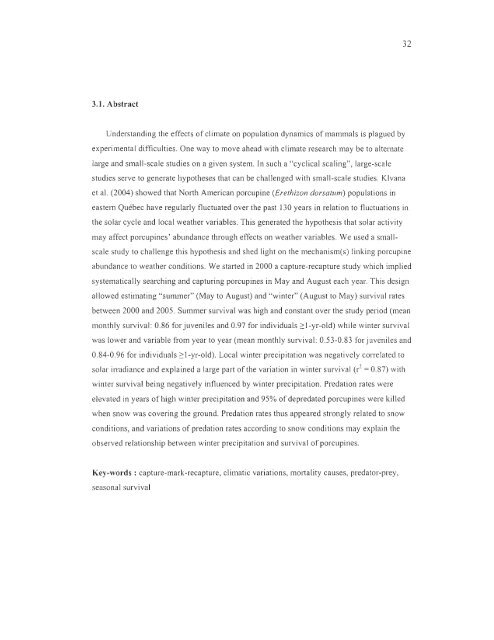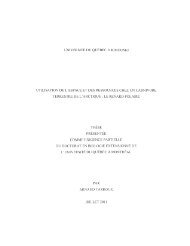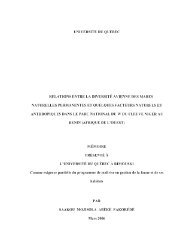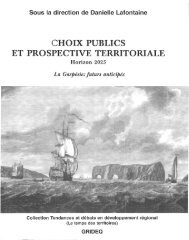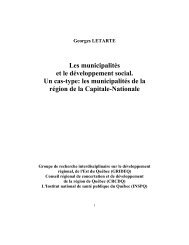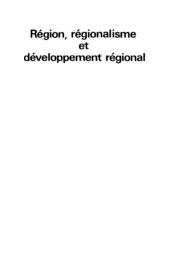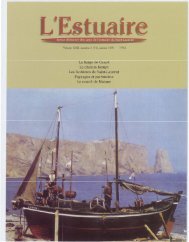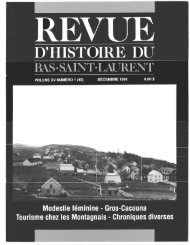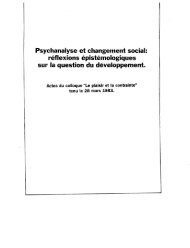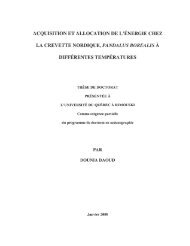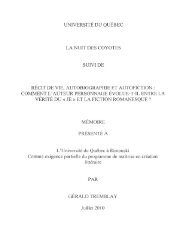influence du climat et de la prédation sur l'utilisation de l'habitat et la ...
influence du climat et de la prédation sur l'utilisation de l'habitat et la ...
influence du climat et de la prédation sur l'utilisation de l'habitat et la ...
Create successful ePaper yourself
Turn your PDF publications into a flip-book with our unique Google optimized e-Paper software.
32<br />
3.1. Abstract<br />
Un<strong>de</strong>rstanding the effects of <strong>climat</strong>e on popu<strong>la</strong>tion dynamics of mammals is p<strong>la</strong>gued by<br />
experimental difficulties. One way to move ahead with <strong>climat</strong>e research may be to alternate<br />
<strong>la</strong>rge and small-scale studies on a given system. ln such a "cyclical scaling", <strong>la</strong>rge-scale<br />
studies serve to generate hypotheses that can be challenged with small-scale studies. Klvana<br />
<strong>et</strong> al. (2004) showed that North American porcupine (Er<strong>et</strong>hizon dorsatum) popu<strong>la</strong>tions in<br />
eastern Québec have regu<strong>la</strong>rly fluctuated over the past 130 years in re<strong>la</strong>tion to fluctuations in<br />
the so<strong>la</strong>r cycle and local weather variables. This generated the hypothesis that so<strong>la</strong>r activity<br />
may affect porcupines' abundance through effects on weather variables. We used a smallscale<br />
study to challenge this hypothesis and shed light on the mechanism(s) linking porcupine<br />
abundance to weather conditions. We stalted in 2000 a capture-recapture study which implied<br />
systematically searching and capturing porcupines in May and August each year. This <strong>de</strong>sign<br />
allowed estimating "summer" (May to August) and "winter" (August to May) <strong>sur</strong>vival rates<br />
b<strong>et</strong>ween 2000 and 2005. Summer <strong>sur</strong>vival was high and constant over the study period (mean<br />
monthly <strong>sur</strong>vival: 0.86 for juveniles and 0.97 for indivi<strong>du</strong>als ~1-yr-old) while winter <strong>sur</strong>vival<br />
was lower and variable from year to year (mean monthly <strong>sur</strong>vival: 0.53-0.83 for juveniles and<br />
0.84-0.96 for indivi<strong>du</strong>als ~ l-yr-old). Local winter precipitation was negatively corre<strong>la</strong>ted to<br />
so<strong>la</strong>r irradiance and exp<strong>la</strong>ined a <strong>la</strong>rge part of the variation in winter <strong>sur</strong>vival (r 2 = 0.87) with<br />
winter <strong>sur</strong>vival being negatively <strong>influence</strong>d by winter precipitation. Predation rates were<br />
elevated in years of hi gh winter precipitation and 95% of <strong>de</strong>predated porcupines were killed<br />
when snow was covering the ground. Predation rates thus appeared strongly re<strong>la</strong>ted to snow<br />
conditions, and variations of predation rates according to snow conditions may exp<strong>la</strong>in the<br />
observed re<strong>la</strong>tionship b<strong>et</strong>ween winter precipitation and <strong>sur</strong>vival of porcupines.<br />
Key-words : capture-mark-recapture, <strong>climat</strong>ic variations, mOitai ity causes, predator-prey,<br />
seasonal <strong>sur</strong>vival


